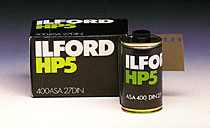|
On one of our last 1975 summer holidays, spent at Lake Lucerne in Switzerland my Minolta gave up. Having come back home almost the first thing I did was to buy what I for several years had been wanting, a Nikon or almost a Nikon. It was a black Nikkormat FTN but with the new lens design of the 50 mm/2.0 Nikkor with which one month later and at a higher price the FT2 was launched.
The Nikkormat was to become my slide film camera whereas I used the Rolleiflex for b/w. In 1977 I got a second body, a Nikkormat FT2 and from then I would hardly use my Rolleiflex anymore.
Until 2001 it was Nikons all the way, Nikon FM, Nikon F3HP
and a Nikon F60 to try out automatic focusing.
In 2002 I stopped taking pictures with the F3 but I still have it and it is a wonderful camera, really built to last.
My first additional lenses were a 135 mm/2.8 Vivitar and a 28 mm/3.5 Nikkor.
I ended up with four Nikkors: 20 mm, 35 mm, 85mm and 200 mm which I thought made up a rather well balanced set. I missed my 28 mm however. I sold it after having bought the 35 mm.
|

Nikkormat FTn 1975

Nikon FM 1979

Nikon F3 bought 1982. The year after the standard finder was exchanged by an HP (high eye point) finder and 1984 the motor drive MD-4 was added.
On camera is the Nikkor 85 mm/1.8, probably the lens I used the most by then; on table a Nikon tele converter TC-200 as well as the AI-Nikkors 20 mm/3.5, 35 mm/2 and 200 mm/4.
I got my first zoom lens together with the Nikon F60 in 1999 and the same year I bought the 70-300 mm AF-Nikkor which, however, was extremely slow in focusing. The new AF-S VR is much better.
|
|
Having 1972 moved into the house where my wife and I still live I soon got a darkroom and here
my son and I spent wonderful evenings making our black and white prints in
orange light and with the smell of developer, stop bath and fixer.
I often think back upon these years. He’s grown up now and a lawyer.
|
For viewing my slides I used this Voigtländer Perkeo.

In the mid eighties it was replaced by a Zeiss Perkeo projector. Zeiss had in the meantime taken over Voigtländer.
Colour films were Kodachrome (15 DIN/25 ASA), Kodachrome II and Ectachrome(both 19 DIN/64 ASA). Black and white were Tri-X Pan (400 ASA), Ilford FP4 (125 ASA) and Ilford HP5 (400 ASA)

Ilford FP4 125 ASA which I would develop in Ilford ID-11 or Kodak HC 110.
Most often I would buy 30 meters making about 18 films with 36 exposures.
|

Ilford HP5 400 ASA/27 DIN

Kodachrome would become my favourite slide film
My last
slide film was taken in Paris in 1993 and I made my last b/w print in the dark
room in 1991.
From then I took colour prints only. They got cheaper and cheaper but also the
quality deteriorated to a point where you couldn’t tell if you had used an
expensive camera with a top class lens or your pictures came from a use- and
throw-away camera. For quite a few years I only took pictures when on holiday.
|